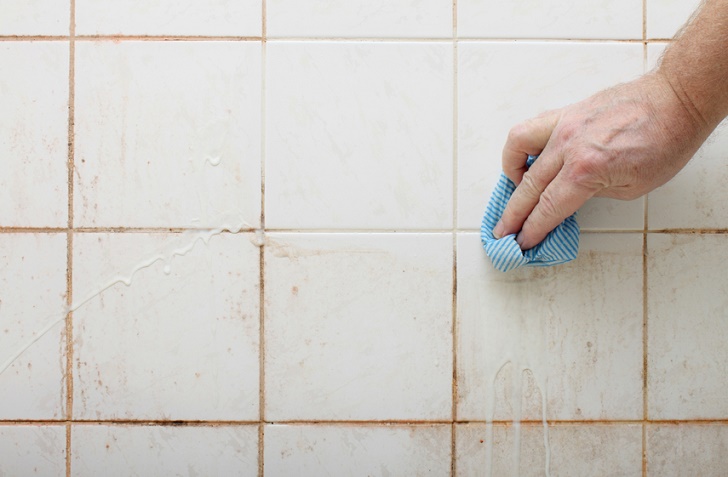Mould starts off small, but can quickly take over your bathroom, becoming a major health hazard. Keeping your bathroom cool, light and dry will help prevent mould growth. If you’ve spotted unsightly mould in your bathroom – read on. Here are 5 tips on how to remove bathroom mould.
READ: How to Prevent Bathroom Mould.
Baking soda and bleach
We’ve heard this one before. Baking soda is a fume-free, gentle cleaning agent that cuts throw grime, dirt, mouuld and more. The heavenly concoction that is easily accessible and affordable to everyone. It is also less harmful than many household cleaning chemicals and works a treat! Mix up:
- One teaspoon of liquid soap
- One cup of baking soda
- A few drops of essential oil
- A little water to make a paste
Mix a solution of bleach and water (one-part bleach, two parts water) and mix that into the paste. Pour the solution into a spray bottle and apply to the affected area. Leave for 15 minutes. Return and scrub the area.

Replace caulking or sealant
In severe cases, you may need to remove and/or replace the caulking or sealant on your tiles. Removing caulk is a fairly easy DIY job. Start by cleaning the area with alcohol. Use the above solution to remove as much mould as you can and allow to dry. Once it’s dry, remove the old caulk and apply more.
Vinegar
Vinegar is another natural household cleaning product that can help remove bathroom mould. Vinegar has acidity that cuts through grime and mould. Pour white vinegar into a spray bottle (don’t dilute), spray on the area, leave for 15 minutes and scrub or wipe away the mould that has lifted.

Ammonia
As a last resort you could use stronger chemicals to remove mould from your bathroom. It’s very important that all instructions are followed to ensure safe use:
- Never mix bleach and ammonia.
- Only use clear ammonia. Not ‘cloudy’ or ‘sudsy’.
- Wear gloves.
- Open all windows and doors. The fumes are very strong and can be dangerous if the room is not ventilated.
- Leave the area for two to three hours before returning to wipe down the surfaces.
When to call a professional
- When your cleaning efforts are not effective at removing mould.
- When the mould is affecting your health (tightness in the chest, coughing, finding it hard to breathe)
- If the mould area is larger than two meters.
- If you’re concerned that your ventilation fan is contaminated with mould and no longer working effectively.
- If you suspect the mould may have come from the sewage system.



